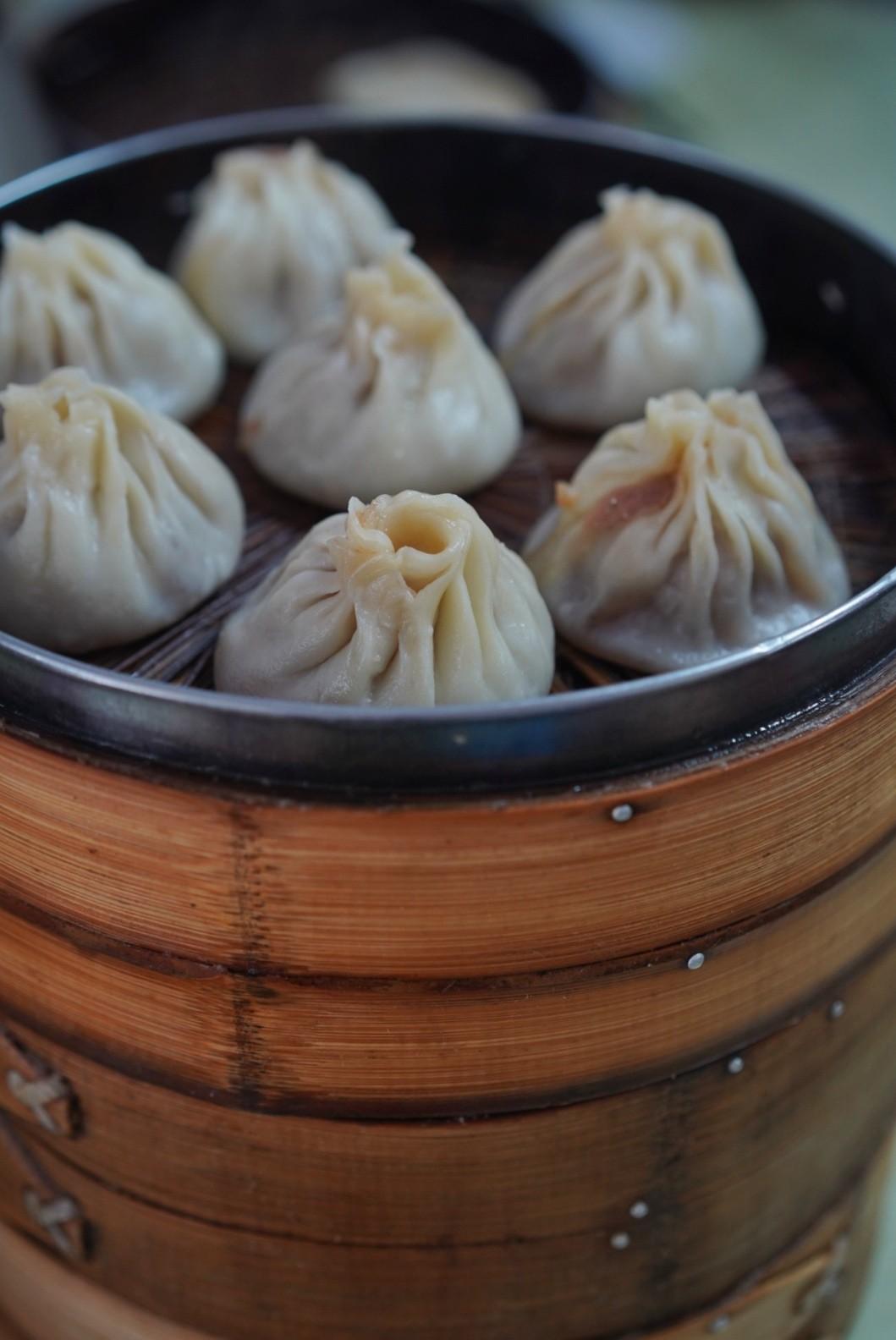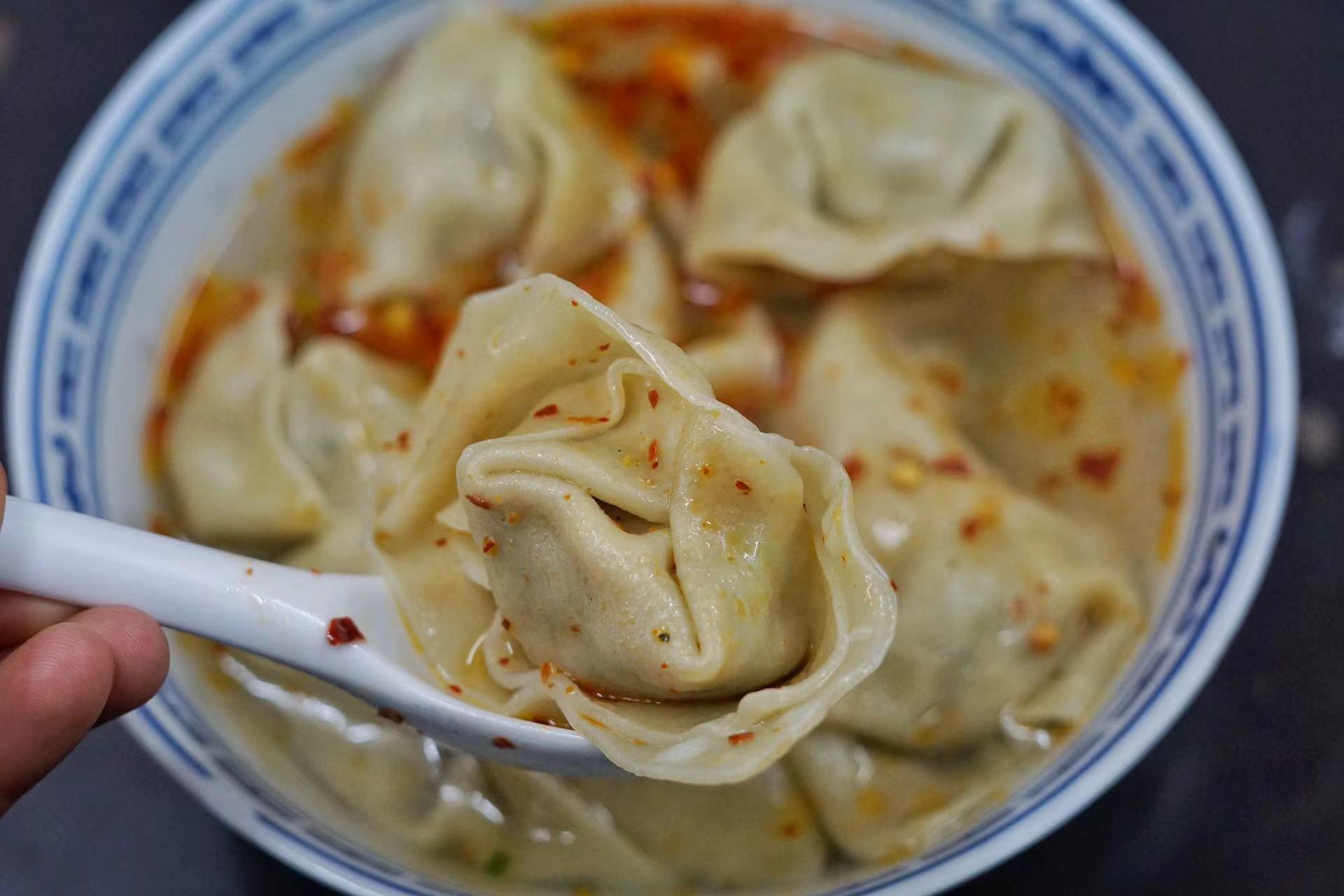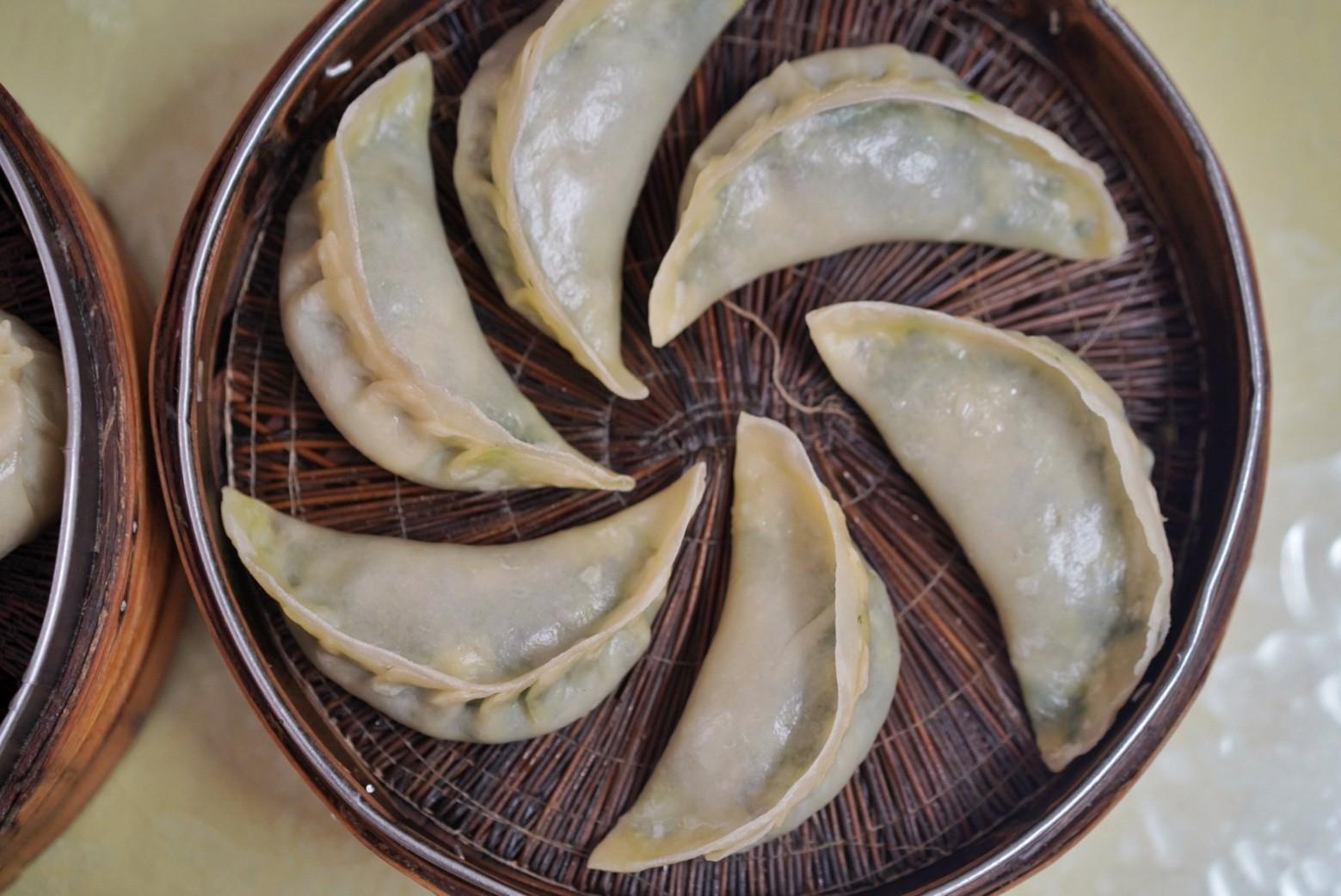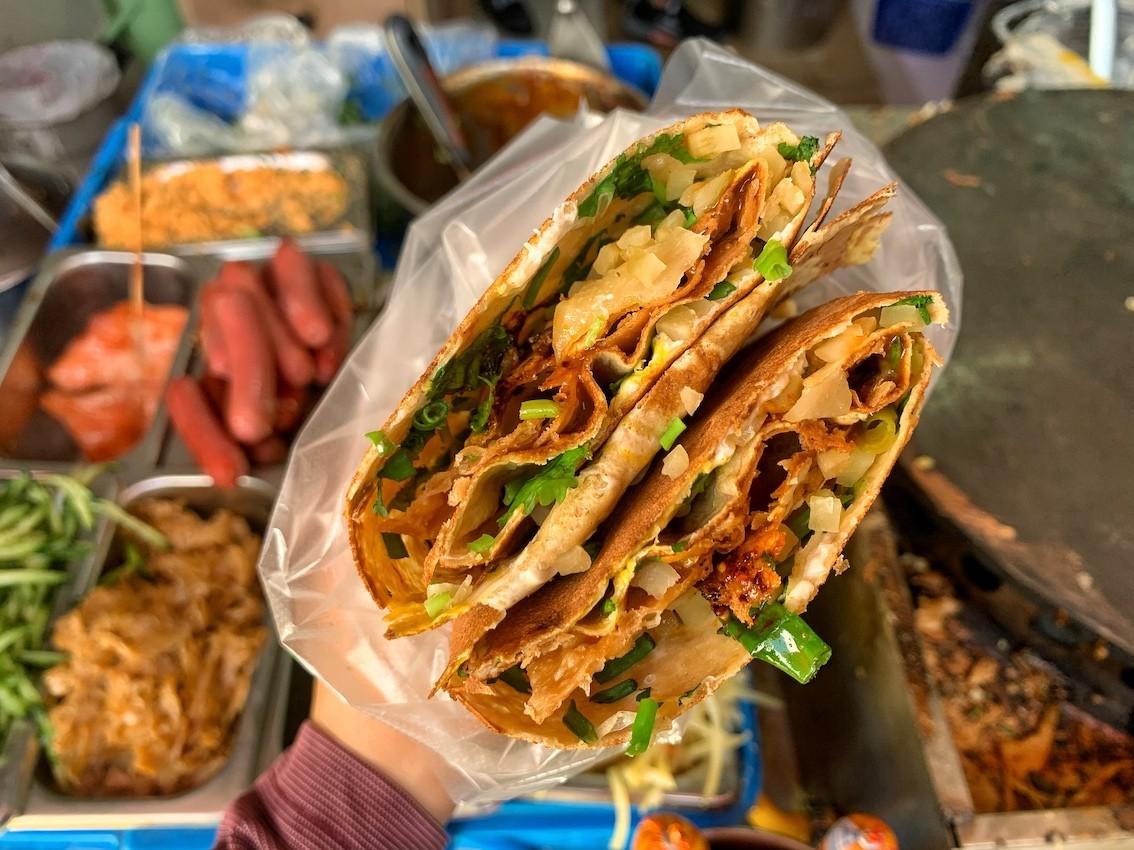The Global Bar Gods Have Spoken: Bar Leone Shanghai is The One
Bar Leone opens in Shanghai to an eager cocktail congregation

June 1, 2024
Updated October 1, 2025
The wonderful world of Chinese dumplings is as vast and varied as the country itself, so it’s no surprise that to new entrants (and experts alike!) it’s no easy feat to navigate.


From innumerable shapes and folds to limitless fillings and wrappers, we’ve put together your essential dumpling guide for all things boiled, steamed and fried.

If you’ve lived in Shanghai for more than five minutes, you’ve heard of the gloriousness that is xiao long bao.
Undeniably one of Shanghai’s most globally recognized dishes, xiao long bao are mouthful-sized pockets of joy filled to the brim with warming soup (made from melted pork aspic jelly) and (most commonly) a sweet minced pork meatball.

However, what most people don’t know is that xiao long bao actually don’t originate within Shanghai city proper; instead, they come from a small suburb on the outskirts of Shanghai called Nanxiang.
READ MORE: Shanghai Day Trip: Nanxiang, Home of the Xiaolongbao

Semantics aside, the outstretched arm of the dumpling’s emanating steam wafts satisfyingly off their piled high bamboo baskets, pulling diners inside dumpling shops across the city at all hours of the day.

The dumpling skins themselves range from so-thin-it’s-nearly-translucent to pudgy and thick, with each soupy morsel best enjoyed dunked in enough chili oil and vinegar to sink a ship.
The key is in the pleating, with each proper xiao long bao having exactly 18 folds, pinched together at the top.

Mi Mian Hui Xin
A good rule of thumb for xiao long bao consumption is the droopier the better; each dumpling should sag like a water balloon ready to explode on impact, releasing a tidal wave of porky goodness that will have you begging for more long after your belly is full.

Yang Yang Ti Mian
Do note, there is definitely a right (and wrong) way to eat a xiao long bao. To avoid turning your tongue to sandpaper, we suggest the bite (the top off); blow (into the just bitten hole); dunk (in chili oil and vinegar); slurp; and gobble method.
Where to get it:
READ MORE: 6 of Shanghai’s Wildest Xiaolongbao
The most common breakfast across all of China, baozi are found everywhere, from the backstreets of Shanghai to the hutongs of Beijing, from streetcorner windows to upscale Cantonese dim sum restaurants, and everything in between.

Char Siu Bao
Famed for their steamed mantou bun exterior that dimples in its plushness, a baozi bite is akin to munching on a cloud... one that gives way to a molten center, ranging from sticky, sweet sesame paste; to savory pork and scallion; to Chinese chives with egg; to mushroom and firm tofu... the list goes on.

Yili Baozi
While some may argue that baozi aren't, in fact, a dumpling (as their dough is fermented), for the sake of this article – and our steadfast affinity for them – we are making an executive decision to include them in this roundup.

Beloved for their diversity (in sweet to savory fillings), affordability (usually clocking in at RMB2-4 each), and convenience (perfect for an on-the-go snack), baozi are truly a powerhouse tummy filler, living up to their literal translation as a bag or package (of yumminess).
Where to get it:

He Le Dian Xin Dian
With a name derived from the process for making these delectable parcels, the 'guo' in guotie stands for 'pot' and 'tie' means 'to stick.'
And, by the transitive property, guotie in Chinese amorously became known as its literal translation into English, potstickers.
At once crisped and steamed, the bottoms are fried in a large, shallow pot, while the tops sizzle to a chewable nibble.


Ayi Huang Guotie Dawang
Commonly filled with soupy pork, these thicker-skinned dumplings are a delectable alternative to xiao long bao, best devoured when dipped in aromatic black vinegar laced with chili oil.
Where to get it:

Da Hu Chun
Sitting snugly at the three-way cross-section of xiao long bao soup dumplings, pillowy mantou, and crispy-bottomed guotie, sheng jian bao are a Shanghai dumpling favorite for tourists and locals alike, the best of all three dumpling worlds amalgamated into one.

Dong Tai Xiang

Dong Tai Xiang
Made with a leavened dough, they are fluffy and filled with balls of loosely compacted fatty pork and soup.
The bottoms are completely coated in sesame seeds to protect the shell from the oil and heat of the skillet, resulting in a perfectly light and crispy bite.
Where to get it:
A round-the-clock dumpling option, wontons have concurrently found their way everywhere from breakfast tables to late-night street corners.
These crescent-shaped, pork-stuffed dumplings are famously found at seemingly every food stand across the nation, each spot tweaking their recipe ever so slightly to cause a ripple in the die-hard fandom of one wonton shop over the next.

In Shanghai, wontons are most commonly filled with minced pork and shepherd’s purse (a flowering mustard green) slathered in a nutty sesame paste or swimming in a clear pork bone broth.

Sanxi Chengdu Chaoshou Dandan Mian

Chengdu’s rendition (known colloquially as hong you chao shou 红油抄手) is presented atop glistening chili oil, the steam from the flash-boiled wonton skins mingling with the sauce and coating each mouthful in a bath of silky chili oil, hot dried chilies, sweet soy sauce, garlic, and Sichuan peppercorns.
READ MORE: How to Eat Your Way Through Chengdu

Wei Xiang Zhai


Savored in soup, dry (aka gan ban 干拌) tossed in all manner of sauces, and even fried, you can’t go wrong when you wonton.
Where to get it:

Dongbei Four Seasons Dumpling King
An umbrella term for filled, crimped and sealed dumplings, jiaozi can be cooked in all manner of methods: steamed (zheng jiao 蒸饺); boiled (shui jiao 水饺); pan-fried (jian jiao 煎饺); deep-fried (zha jiao 炸饺子); or served in a bowl of soup (tang jiao 汤饺).
There are even egg jiaozi (known as dan jiao 蛋饺), where the wrapper is made of a thin slice of cooked egg that is folded and steamed as if it were dough.


The first two varieties are the most common – particularly in Northern China, where dumplings are a year-round staple of Dongbei cuisine – but jiaozi iterations can be easily spotted in nearly every province in the country.



Jiaozi across China (and all of Asia, really) can be folded in an infinite number of ways – from a pinched-edge fold to a half moon, from a silver ingot shape to the four-pleated star – with a multitude of fillings options, equally as varied.
Where to get it:

Shao mai (or siu mai in Cantonese) are cylindrical in shape, encased within a thin wrapper, the top of which is left open and garnished with crab roe or shiitake mushroom when prepared in the Cantonese style.
Sometimes with a gingery taste, shao mai can also be flavored with rice wine, sesame oil, scallions or bamboo shoots.

Yang Yang Ti Mian
These ruffle-edged, twisted-at-the-neck dumplings can be found perched in steamer baskets around Shanghai, along with other interpretations filled with anything from minced pork and rice, to shrimp with pork meatballs (most commonly found on Cantonese dim sum tables), to salted egg yolk.

Leshan Shao Mai
A popular alternative, the Leshan shao mai are unlike the Cantonese fare touted at dim sum stands in Southeast China.
Instead, stacks on stacks of Leshan shaomai are swollen and bulbous from a ground pork and scallion center, then pinched and twisted at the top, the feathery stratum of pleats flowering open, carnation like, while being steamed.

Coveted for their skirted head, each thin ruffle adds an added layer of chew that sops up extra flavor from a quick swim in aged vinegar lined with chili oil.
Where to get it:

Yuan You Tao
The quintessential dim sum dish, steamed har gow shrimp dumplings are delicately flavored with garlic and sesame.
They should contain at least two whole shrimps within a near-translucent wheat starch wrapping, with seven to ten elegant pleats at the joint.

Yi Long
Har gow are said to be exceedingly difficult to make, the benchmark by which the skill of a dim sum chef can be judged.
Where to get it:

Lida Tangyuan Hundun
A popular Chinese dessert that is typically eaten during Mid-Autumn Festival, tang yuan are gumball-sized glutinous rice balls stuffed with all manner of black sesame paste, sweetened lotus paste, red bean, and the like.
Often scooped into a demurely sweetened cold soup of sorts, tang yuan are an ideal option for cooling your mouth down after a spicy meal.
Where to get it:

Another rice-based dumpling, the zongzi (粽子) is a triangle-shaped sticky, glutinous steamed rice pocket that floods every Chinese city around Dragon Boat Festival.
Expertly folded in bamboo leaves for steaming, zongzi are stuffed with glutinous rice, egg yolk, pork and other goodies, then wrapped with thin strips of pliable straw.

The fat from the meat melts into the rice, creating a thick, gooey texture and hearty flavor throughout.
More often filled with savory ingredients, sweet options packed with red bean, red dates, black sesame, or a mix are also worth a sample.
One of these bad boys will set you back only RMB4-6 and will keep you full for hours.
Where to get it:

Yak & Yeti

With thicker skins than their Shanghainese wonton counterparts, Tibetan-style momo tend to be rounder in shape, conventionally filled with either chicken or pork.
At times, yeast or baking soda are added for a doughier texture, allowing the dumplings to hold their shape when dipped in a variety of sauces – tomato chutney, sesame sauce, achar, or even broths.
Most often steamed, momo can also be pan- or deep-fried.
Where to get it:


My name is Sophie Steiner, and welcome to my food-focused travel blog. This is a place to discover where and what to eat, drink, and do in Shanghai, Asia, and beyond. As an American based in Shanghai since 2015 as a food, beverage, travel, and lifestyle writer, I bring you the latest news on all things food and travel.
Your email address will not be published.
Be the first to comment!